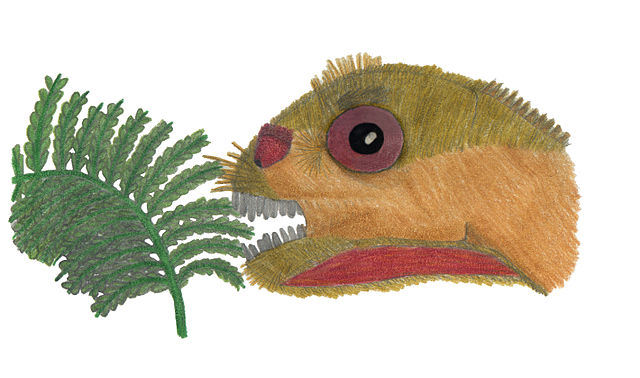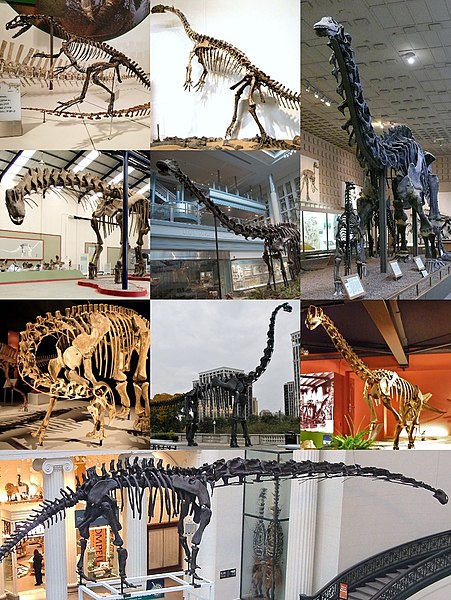Mussaurus is a genus of herbivorous sauropodomorph dinosaur that lived in southern Argentina during the Sinemurian stage of the Early Jurassic. It receives its name from the small size of the skeletons of juvenile and infant individuals, which were once the only known specimens of the genus. However, since Mussaurus is now known from adult specimens, the name is something of a misnomer.
Mussaurus
Life restoration of an infant eating a Dicroidium fern
Sauropodomorpha is an extinct clade of long-necked, herbivorous, saurischian dinosaurs that includes the sauropods and their ancestral relatives. Sauropods generally grew to very large sizes, had long necks and tails, were quadrupedal, and became the largest animals to ever walk the Earth. The prosauropods, which preceded the sauropods, were smaller and were often able to walk on two legs. The sauropodomorphs were the dominant terrestrial herbivores throughout much of the Mesozoic Era, from their origins in the Late Triassic until their decline and extinction at the end of the Cretaceous.
Sauropodomorpha
Skull of Nigersaurus taqueti and head posture in sauropodomorphs
Restoration of Panphagia, one of the most basal sauropodomorphs known.
Plateosaurus is a well-known prosauropod.






